Base of skull
The base of the skull is the part of the skull that is located below the line running in front at the level of the infraorbital margin and then back along the zygomatic process of the frontal bone , the wedge-cheek suture, the dorsal crest of the large wing of the sphenoid bone , the upper edge of the outer auditory aperture, the upper ear line to the outer line Occipital protrusion.
There are external and internal bases of the skull.
The external base of the skull , the basis cranii externa, is covered in front by the bones of the face. Behind the skull, palatum osseum, the pterygoid processes, processus pterygoidei, whose medial plates together with the perpendicular plates of the palatine bones border outside the choanae, choanae, separated by a vomer, vomer.
Between the pterygoids, laterally and posteriorly, the outer skull base is formed by the body and large wings of the sphenoid bone, the lower surface of the pyramid, the drum part, the portion of the scaly part of the temporal bone , and the basilar part and the anterior section of the occipital scales.

At the base of the medial plate of the pterygoid process there is a scaphoid fossa, fossa scaphoidea. Behind the appendage there is a lacerated hole , foramen lacerum, which has uneven edges and is filled with cartilaginous tissue on an uncertified skull. In the region of the large wing of the sphenoid bone, the oval and the awning open, foramen ovale et foramen spinosum. Lateral from these openings is the mandibular fossa, fossa mandibularis, with the articular surface, facies articularis, bounded from the front by the articular tuberculum, tuberculum articulare. On the lower surface of the pyramid, a canalis canalis opens, canalis caroticus, posteriorly and laterally there is a jugular fossa, fossa jugularis, leading to the jugular foramen, foramen jugulare, formed as a result of jugular cuttings of the pyramid of the temporal bone and lateral part of the occipital bone. Outside the jugular opening is the styloid processus, processus styloideus, and laterally the mastoid process. Processus mastoideus. Between them there is a stylomastoid aperture, foramen stylomastoideum.
The body of the sphenoid bone is connected with the basilar part of the occipital bone by means of a wedge-occipital synchondrosis, synchondrosis spheno-occipitalis. In the area of the base of the skull, two more synchondrosis are distinguished: wedge-stony synchondrosis, synchondrosis sphenopetrosa, and stony-occipital synchondrosis, synchondrosis petro-occipitalis, which on the macerated skull are respectively a wedge-stony fissure, fissura sphenopetrosa, and stony-occipital fissure, fissura Petrooccipitalis.
In the center of the skull base there is a large (occipital) opening, foramen magnum, in front of which there is a pharyngeal tuberculum on the basilar part of the occipital bone, tuberculum pharyngeum, on the sides - occipital condyles, condylus occipitales, posterior to the aperture almost along the middle line extends to the external occipital lobe , Protuberantia occipitalis externa, external occipital crest, crista occipitalis externa, with the lower and upper wings extending from it, linea nuchae inferior et linea nuchae superior.

The inner base of the skull, the basis cranii interna, is a concave uneven surface that repeats the relief of the adjacent brain. The surface has three grooves: the anterior, middle and posterior cranial fossa.
Anterior cranial fossa, fossa cranii anterior, least deep. Its bottom is formed by the orbital part, pars orbitalis, frontal bone, small wings, alae minores, sphenoid bone, and trellis, lamina cribrosa, latticed bone . At the rear it is bounded by the edge of small wings and the tubercle of the saddle, tuberculum sellae. The most profound place is the area of the latticed plate, here stands the cock's crest, crista galli, anterior to which is a blind hole, foramen cecum.
The middle cranial fossa , fossa cranii media, the deepest in the lateral divisions; In the central part of it the Turkish saddle rises, sella turcica, in the center of which is the pituitary fossa, fossa hypophysialis. Ahead of the middle cranial fossa is limited by the small wings of the sphenoid bone, behind it are the back of the saddle, dorsum sellae, and the upper edge of the pyramid, margo superior partis petrosae. The bottom of the middle cranial fossa consists of the body and large wings of the sphenoid bone, the anterior surfaces of the pyramids and the medullary surface of the scaly part of the temporal bone. At the bottom of the middle cranial fossa on the sides of the base of the Turkish saddle are carotids, sulci carotid, each of which, going backwards, downward and lateral to the apex of the pyramid, leads to the carotid canalis caroticus. In the cavity of the lateral sections of the middle cranial fossa open: the visual canal, canalis opticus, upper glandular fissura orbitalis superior, lacerated foramen lacerum, round hole, foramen rotundum, oval foramen, ovale, and spinous aperture, foramen spinosum. On the front surface of the pyramid are visible: trigeminal impression, impressio trigemina, drum roof, legmen tympani, arcuate elevation, eminentia arcuata, as well as crevices and furrows of large and small stony nerves.
The posterior cranial fossa , fossa cranii posterior, is confined to the front by the back of the saddle and the upper edge of the pyramid; Posteriorly the border passes along the sulcus of the transverse sinus, sulcus sinus transversi, and the inner occipital protuberance, the protuberantia occipitalis interna.
It is a deep cranial fossa. Its bottom is formed almost entirely by the occipital bone, except for the upper part of the occipital scales, part of the body of the sphenoid bone (a small area behind the saddle back), the posterior surface of the pyramid and the occipital angle of the parietal bone. In the center of the fovea is a large occipital foramen, foramen magnum, anterior to it is a ramp, a clivus formed by the body of the sphenoid bone and the basilar part of the occipital bone. In the lateral semicircle of the large opening, the sublingual canal opens, canalis hypoglossalis, outside and behind the jugular foramen, foramen jugulare, is not a permanent condylar canal, canalis condylaris. From the posterior edge of the large opening along the midline, the inner occipital crest, crista occipitalis interna, rises to the inner occipital protuberance, protuberantia occipitalis interna. Somewhat higher on both sides of the cruciform elevation, eminentia cruciformis, the furrows of the transverse sinus, sulci sinus transversus, extend from the furrow of the sigmoid sinus, sulcus sinus sigmoidei, terminating at the jugular aperture.
You will be interested to read this:

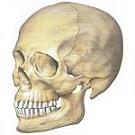
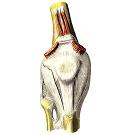
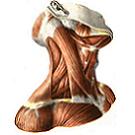
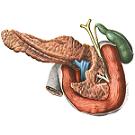
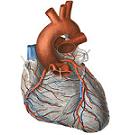

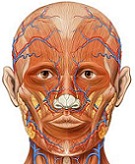

Comments
When commenting on, remember that the content and tone of your message can hurt the feelings of real people, show respect and tolerance to your interlocutors even if you do not share their opinion, your behavior in the conditions of freedom of expression and anonymity provided by the Internet, changes Not only virtual, but also the real world. All comments are hidden from the index, spam is controlled.